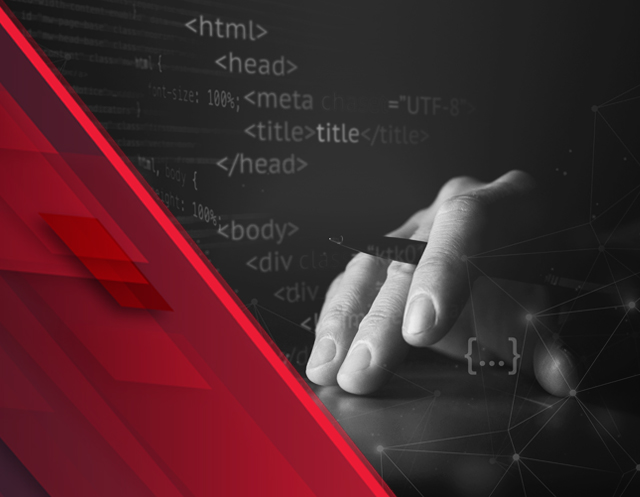Python Programming:
Tips and Tricks for Beginners in 2023
Python programming has become one of the most popular languages for beginners and experienced developers. It is perfect for a variety of applications, including data analysis, data visualization, web development, machine learning, and artificial intelligence, thanks to its simplicity and adaptability. We will provide you with advice, insights, and pointers in this manual to help new Python programmers get started. A few vital ideas and resources for professional success will also be covered. This manual will arm you with the information and abilities required to succeed in the profession, whether you’re a novice programmer or an established developer wishing to learn Python.
Tips and Tricks for Beginners:
- Start with the basics: Before diving into more complex topics, it’s important to understand the fundamentals of Python programming, such as variables, data types, functions, loops, and conditionals. You can find many free online resources and tutorials to help you learn these basics.
- Use an Integrated Development Environment (IDE): An IDE is a software application that provides a comprehensive environment for coding, debugging, and testing Python programs. Popular IDEs for Python include PyCharm, Spyder, and Jupyter Notebook.
- Practice coding regularly: The more you practice coding, the more familiar you will become with Python programming concepts and syntax. Try to solve coding challenges or work on small projects to apply what you have learned.
- Use Python libraries: Python has many libraries that provide pre-built functions and tools for data analysis, data visualization, web development, machine learning, and artificial intelligence. Some popular libraries include NumPy, Pandas, Matplotlib, Flask, Django etc.
- Debug your code: Debugging is an essential skill for any programmer. Learn how to use debugging tools like print statements, breakpoints, and error messages to identify and fix errors in your code.
Explanation of the basics of Python programming:
- Variables: A variable is a container that holds a value. You can assign different data types to variables, such as numbers, strings, lists, and dictionaries.
- Data types: Python has several built-in data types, including integers, floats, strings, lists, tuples, and dictionaries. Each data type has its own properties and methods.
- Functions: A function is a block of code that performs a specific task. You can define your own functions or use built-in functions in Python.
- Loops: Loops are used to execute a block of code repeatedly. Python has two types of loops: for loops and while loops.
- Conditionals: Conditionals are used to execute different blocks of code based on a condition. Python has if-else statements, as well as nested if-else statements.
Best practices for coding in Python:
- Write readable code: Use clear and concise variable names, comments, and whitespace to make your code more readable and understandable.
- Use object-oriented programming: Object-oriented programming (OOP) is a programming paradigm that uses objects to represent real-world entities and their properties and behaviours. OOP can help you write more modular and reusable code.
- Follow the PEP8 style guide: PEP8 is a set of guidelines for writing Python code that is consistent, readable, and maintainable. Adhering to PEP8 can help you write code that is easier to understand and debug.
Tips for writing efficient and effective code:
- Use list comprehensions: List comprehensions are a concise way to create lists based on existing lists. They are faster and more efficient than loops.
- Avoid using global variables: Global variables can make your code harder to read and debug. Instead, use function arguments or class properties.
- Use generators: Generators are functions that return an iterator. They can be used to generate large sequences of data without consuming too much memory.
Common mistakes beginners make and how to avoid them:
- Indentation errors: Python relies on indentation to structure code blocks. Make sure to use consistent and correct indentation to avoid syntax errors.
- Name errors: Name errors occur when you try to use a variable that has not been defined. Make sure to define all variables before using them in your code.
- Type errors: Type errors occur when you try to perform an operation on two incompatible data types. Make sure to check the data types of your variables before performing operations on them.
- Not using version control: Version control is a software tool that allows you to track changes to your code over time. Not using version control can make it difficult to collaborate with others and revert changes if necessary.
Python programming can be both challenging and rewarding for beginners. By following these tips and tricks, you can get started with the basics of Python programming, use best practices to write efficient and effective code and avoid common mistakes. With practice and patience, you can become proficient in Python programming and apply your skills to data analysis, data visualization, web development, machine learning, and artificial intelligence.
Data Visualization with Python
The technique of graphically portraying data in order to effectively communicate insights and trends is known as data visualization. Data visualization is a crucial programming ability that can help programmers communicate their findings to others. Several libraries for data visualization are available in Python, including Matplotlib and Seaborn, which enable a variety of representations, from basic scatter plots to more complex heat maps and histograms.
Python visualizations are often created using the popular Matplotlib module. It offers a variety of customisation possibilities to produce graphs that are aesthetically pleasing. Another library that offers a user interface for making intricate statistical visualizations is Seaborn.
Python makes it easy to create various types of data visualizations. For instance, a programmer can use Matplotlib to create bar charts to compare data, line charts to track trends over time, or scatter plots to understand the relationships between variables.
Web Development with Python
Web development involves creating web applications or websites that run on the internet. Python provides various web development frameworks like Flask and Django that allow programmers to develop web applications quickly and easily.
Flask is a popular micro-framework that allows developers to create web applications without the overhead of a large framework. It provides several tools and libraries to simplify the development process. Django, on the other hand, is a full-stack web framework that includes everything a programmer needs to build a web application from scratch.
A basic web application in Python can be created by using a framework like Flask, which allows programmers to define routes and endpoints, render templates, and connect to databases.
Machine Learning with Python
Machine learning is a subfield of artificial intelligence that involves training algorithms to learn from data and make predictions or decisions. Python offers a range of libraries for machine learning, such as Scikit-learn and TensorFlow.
Scikit-learn is a popular library that provides a wide range of machine learning models, such as linear regression, decision trees, and support vector machines. TensorFlow is an open-source library that is widely used for developing deep learning models.
A basic machine learning model can be created by using Scikit-learn, which allows programmers to train a model on a dataset and make predictions on new data.
Artificial Intelligence with Python
Artificial intelligence involves creating intelligent machines that can mimic human behaviour and perform tasks that require intelligence. Python provides several libraries for artificial intelligence, such as OpenAI and PyTorch.
OpenAI is a research organization that provides an API for accessing its AI models, such as language processing and image recognition. PyTorch is a deep learning library that provides a flexible platform for building and training AI models.
A basic AI model can be created by using PyTorch, which allows programmers to define neural networks, train them on data, and make predictions on new data.
Python programming is one of the most in-demand skills in the job market, and it offers a wide range of career opportunities for beginners and experienced programmers alike. If you’re new to Python programming and looking to start a career in this field, here are the
Top 10 best career opportunities to consider in 2023:
- Data Analyst – As a data analyst, you’ll use Python programming to collect, clean, and analyze data to help businesses make informed decisions.
- Data Scientist – Data scientists use Python programming to develop machine learning algorithms and predictive models to analyze complex data sets.
- Data Visualization Specialist – Data visualization specialists use Python programming to create visual representations of complex data sets to help businesses understand their data better.
- Web Developer – Python is widely used in web development, and as a web developer, you’ll use Python programming to build websites and web applications.
- Machine Learning Engineer – Machine learning engineers use Python programming to develop machine learning algorithms and implement them in real-world applications.
- Artificial Intelligence Engineer – Artificial intelligence engineers use Python programming to develop intelligent systems that can learn and make decisions on their own.
- Software Engineer – Python is widely used in software development, and as a software engineer, you’ll use Python programming to build software applications and systems.
- Cybersecurity Analyst – Cybersecurity analysts use Python programming to develop tools and techniques to detect and prevent cyber-attacks.
- DevOps Engineer – DevOps engineers use Python programming to automate and manage the software development process and improve software delivery.
- Robotics Engineer – Robotics engineers use Python programming to develop intelligent robots and autonomous systems that can perform complex tasks.
Final views
In conclusion, Python is a versatile language that can be used for various purposes, from data analysis to artificial intelligence. With numerous libraries and frameworks, Python makes it easy for programmers to develop web applications, create visualizations, build machine learning models, and develop AI applications. By learning Python and its libraries, programmers can unlock a world of opportunities and solve complex problems efficiently. To continue learning Python, readers can refer to online resources and tutorials, at Tecswan International.




